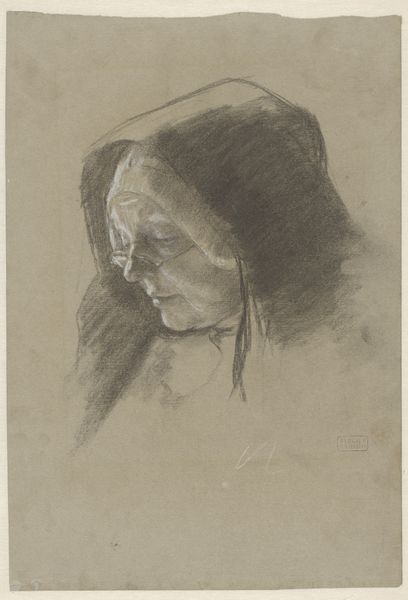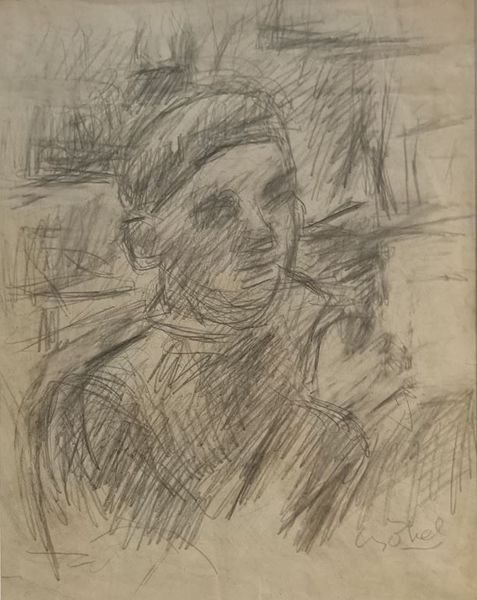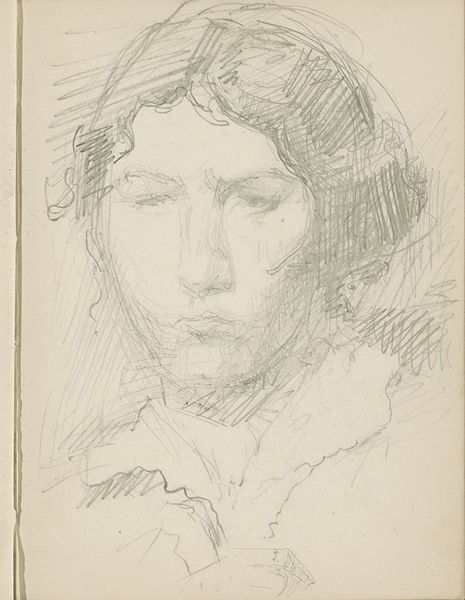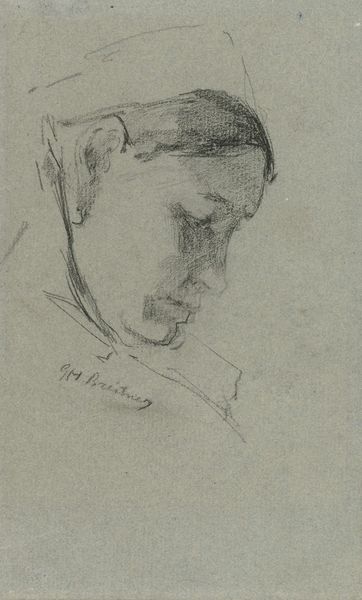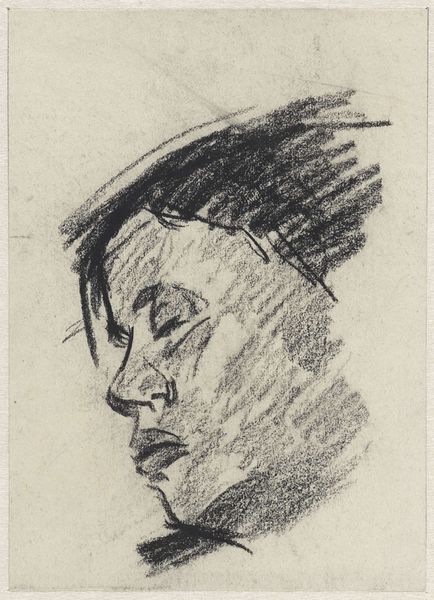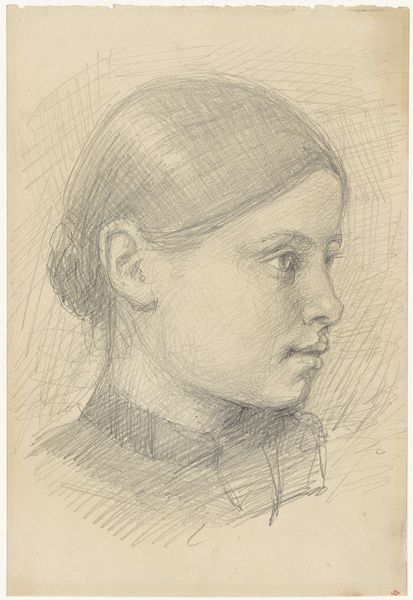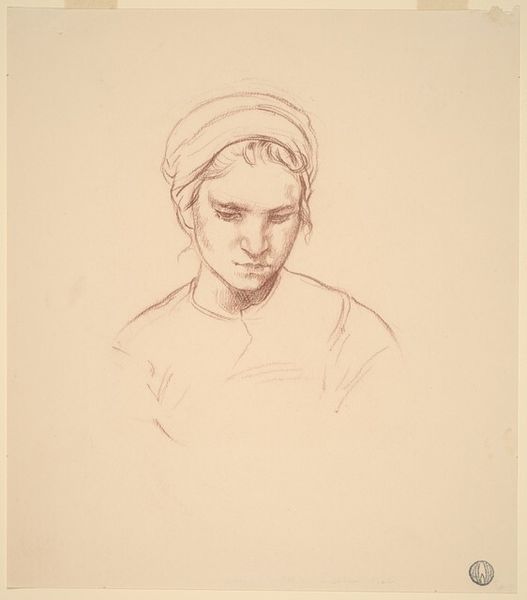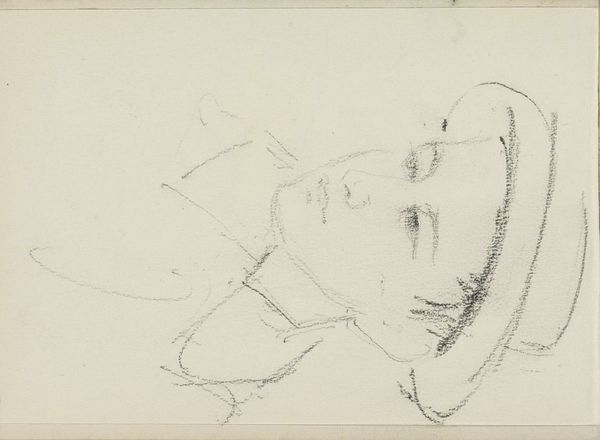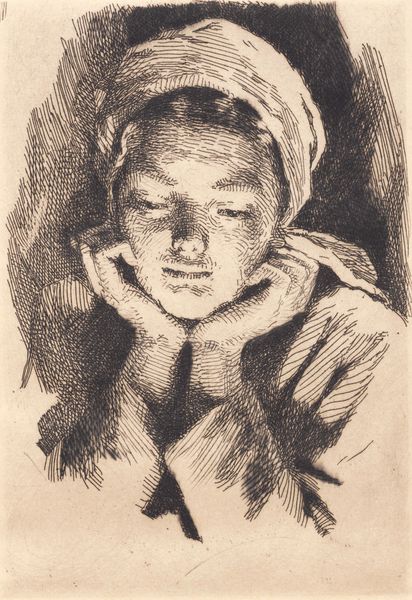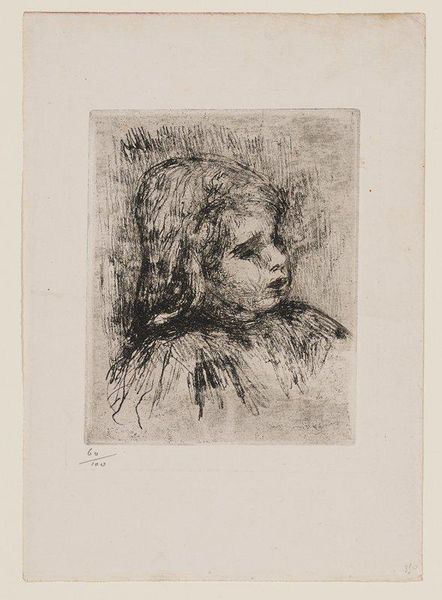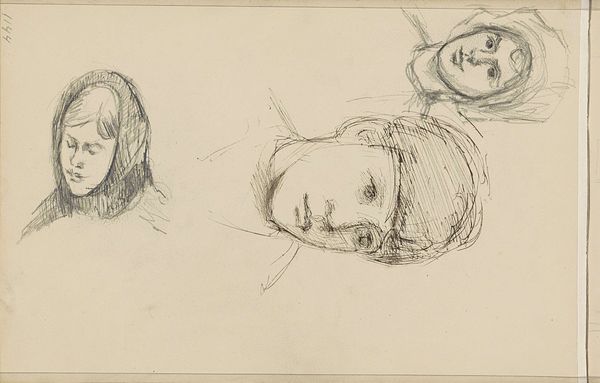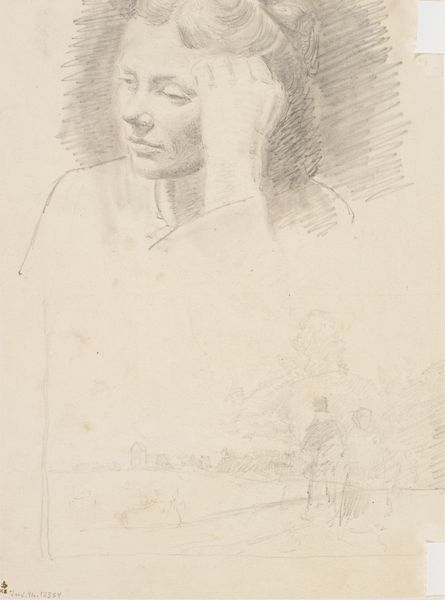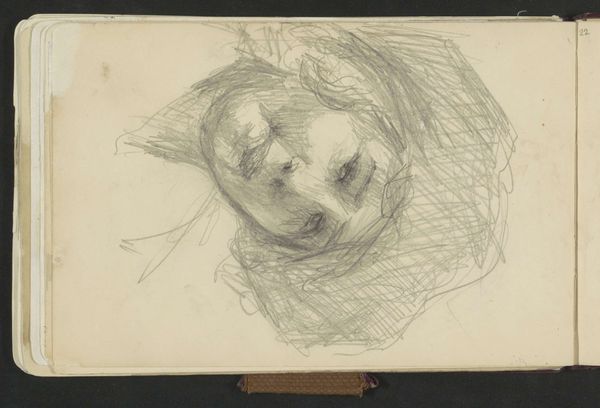
drawing, pencil
#
portrait
#
pencil drawn
#
drawing
#
amateur sketch
#
light pencil work
#
pencil sketch
#
personal sketchbook
#
portrait reference
#
pencil drawing
#
pencil
#
sketchbook drawing
#
portrait drawing
#
pencil work
#
realism
Dimensions: height 303 mm, width 228 mm
Copyright: Rijks Museum: Open Domain
Curator: Before us is "Meisje uit Laren," a pencil drawing by Albert Neuhuys, created sometime between 1854 and 1914. Editor: The immediate impression is one of gentle introspection, or perhaps weariness. The muted tones and downward gaze create a profoundly subdued atmosphere. Curator: Absolutely. Neuhuys masterfully employs light and shadow to delineate the girl's features, using a relatively simple medium. Notice how the cross-hatching above her head implies a texture and dimension in contrast with her simply shaded facial features. Editor: Her head covering is especially interesting. It obscures much of her hair, pushing her face into the foreground. It seems a visual anchor. It brings to mind ideas of modesty and rural identity, considering Laren’s history as a village with traditional customs. Is she representative of a certain social type? Curator: I think that's key to interpreting the work. It's less about individual portraiture, and more about type. Neuhuys focuses our attention through these compositional choices and tonal balances. Notice the rough sketches beyond her immediate figure; these reinforce the primary object: her. Editor: The shadow beneath her chin and the dark strokes that render her clothing suggest humility, which resonates with traditional values often ascribed to women. And in looking at the values encoded in clothing during this time period… Curator: We can understand, through its formal elements, Neuhuys’ artistic decision to distill essential form. Its composition pushes the narrative toward an evocative representation rather than exacting detail, which serves to amplify its universal nature. Editor: Perhaps. Ultimately, viewing her through that lens opens up a discourse on how traditional artistic choices serve cultural messages that still linger in our memories and imagination. It encourages reflection about the complex relationship between personal experience and archetypal images. Curator: Precisely, and I believe that is what the work asks from us, to question both its form, function and our relationship to the image making that we find in it. Editor: Thank you. A lovely journey through visual form and symbolic association.
Comments
No comments
Be the first to comment and join the conversation on the ultimate creative platform.
